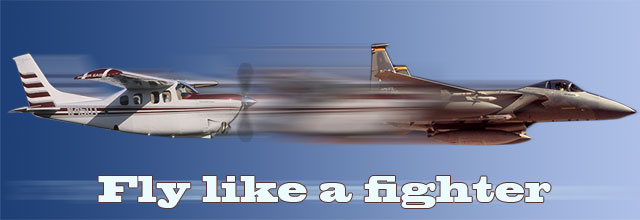Fly like a fighter: Dress for egress
Lessons learned from the 'poopy suit'

In Air Force life support training, we learned to always “dress for egress.” In other words, wear the clothing you would want (need) to have on in case you ejected and had to spend more time than you would like on the ground waiting for rescue. On the first really cold day in pilot training, I followed this advice and geared up with thermal underwear top and bottom, and my heavy quilted winter Nomex jacket. I also made sure to stuff my stocking hat and winter gloves in my jacket pockets.
 This didn’t work very well for me. With the combination of a bubble canopy acting like a greenhouse and the physical exertion pulling Gs, I was a hot mess. Literally. The heat and the twisting and turning around the sky made me nauseated. So I learned that the right balance of clothing for me on a cold day was a thermal top and my summer jacket. I still carried the hat and gloves.
This didn’t work very well for me. With the combination of a bubble canopy acting like a greenhouse and the physical exertion pulling Gs, I was a hot mess. Literally. The heat and the twisting and turning around the sky made me nauseated. So I learned that the right balance of clothing for me on a cold day was a thermal top and my summer jacket. I still carried the hat and gloves.
Once I started flying the F-15, I was fitted with an anti-exposure dry suit, also called the poopy suit, for missions over cold water. A wet suit, as used in scuba diving, fits snugly against the body, is rubbery and flexible, and actually allows a thin layer of water to enter between the suit and the body. This works fine for relatively warm water, but a dry suit is necessary for colder water. The dry suit completely seals water out. It looks like one-piece footed pajamas for toddlers and is made of heavier duty, not-so-flexible rubberized material. The integrated booties keep the water out of the feet area, and tight elasticized wrist and neck openings seal the suit to those areas. We first put on an under layer jump suit, then the poopy suit, then an oversized flight suit and oversized boots. We looked like green Michelin men. As you might guess, it is very uncomfortable.
The first time I had to wear it was on a deployment flight from Germany to England over the North Sea. As much as it half strangled my neck, I was still glad I had it on as I looked down on the gray choppy water below. Once we got out of the suits, the red ring around our necks was evidence that the elastic seals were tight enough.
The next day in our mission brief, we learned that the water temperature had risen 1 degree. Everyone let out a big cheer, as this put the temperature just above the limit so that poopy suits weren’t required. When it was time to gear up, I put on my poopy suit, and of course got razzed and grilled, then finally questioned, “Why?”
It was simple. The water temperature was still in the 50-degree Fahrenheit range, which is cold. I would freeze swimming in a pool or the ocean with water temperatures in the 70-degree Fahrenheit range. My chances for survival were dramatically improved with the suit on. It didn’t matter what the regulations said; for me, this was a no brainer.
Most of us aren’t going to tackle a North Atlantic crossing to or from Europe in our airplanes, so there isn’t a need to ever wear a dry suit. However, the dress for egress mantra still applies to all of us. Figure out what works for you, but in general plan for the worst, and bring with you the gear you would need for an overnight stay for an unplanned stop along your route. Even if the unplanned stop gets you to a nice hotel, having a winter coat in winter temperatures might just put a smile on your face.
Larry Brown of Colorado Springs, Colorado, is a retired Air Force F-15 pilot who is using the lessons he learned as a fighter pilot as a GA pilot in his Cessna P210. Brown, who has 2,900 hours total time during his 35 years of flying, also was an instructor pilot and flight examiner in the Air Force T-38 and instructor pilot in the T-52, the military’s version of GA’s Diamond DA40. See previous installments of “Fly like a fighter.”



